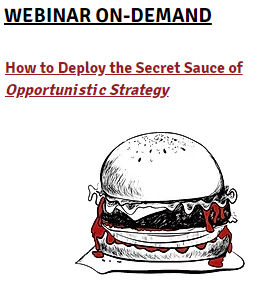Seemingly discrete events in the life of running a hospital-based medical group are interrelated in terms of either leading to the group’s business success or resulting in its failure.
Each event, each instance, each interaction, whether within your group, between your group and the hospital, or between group members and other physicians, reverberates far beyond the scope of the immediate issue. The nexus is that they are all elements upon which the success, or failure, of the group hinges.
Yet, the average group, even one “benchmarked” to best practices, fails to understand this. [I’m a strong disbeliever in “benchmarking” as I find that in practice it encourages a cap on innovation. Successful groups don’t benchmark, they aim to exceed all current standards. After all, if man had been content to benchmark to the best dragging sled, the wheel would never have been invented. Why should you limit your success by benchmarking?] Its leaders may address some of the events and attempt to manage them as discrete instances. Other events are viewed as inconsequential and are allowed to “fade away,” as if that is actually possible. When they bring in outside advisers, attorneys and consultants, they are generally as “silo blinded,” both by the traditional boundaries of their professions and their inability to understand interconnectivity, as the group is itself.
Consider the following event:
You are the leader of an anesthesia group with an exclusive contract at a large community hospital. You also serve as Chair of the anesthesia department.
One of your physicians, Dr. Green, gets into a verbal altercation with a hospital employee. It’s unclear who started the argument.
The COO says that Dr. Green’s behavior is indicative of the poor working relationship between the group and the hospital’s staff.
Most groups would either handle the situation administratively, perhaps counseling Dr. Green, or perhaps treating it as a medical staff issue. And that would be it. Situation closed.
But what is the later impact of the altercation on the following situation?
Three weeks later, you attend a medical executive committee meeting. A surgeon who always leaves his assistant surgeon to close (and who therefore has not witnessed for years what goes on in the O.R. after he leaves) blames what he sees as slow case turnover in the operating room on the anesthesia group. There’s general agreement among the committee members that there’s a problem with anesthesia department leadership.
Although later posts will address many of the strategies and tactics that groups must develop and implement in order to deal with, and to take advantage of, the interrelatedness among events such as these, it is easy to understand from this vantage point that the news of Dr. Green’s altercation had to have had an impact on the viewpoint of the members of the medical executive committee.
How might the group have responded to the altercation incident if it had occurred to its leaders that it engendered an opportunity to protect the group’s interests . . . and even to advance them?
As I’ll discuss in future posts, because seemingly discrete events, instances and interactions are related, they can be managed in the sense of managing the risk they pose to your group and, in many instances, flipped to become positive events that have the effect of advancing your group’s interests.




